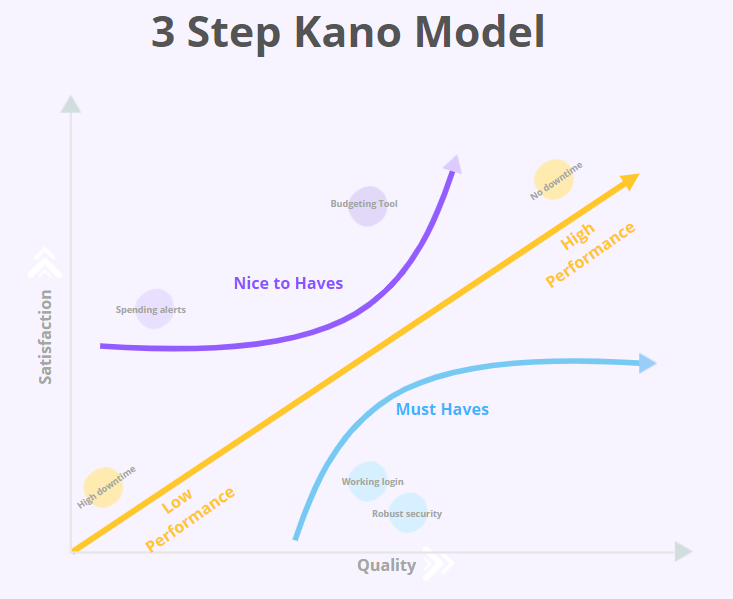How the Kano (Kah-no) model can help you prioritize your customer’s desires?
Developed by Noriaki Kano (Kah-no) back in 1984, this model provides an easy-to-use, practical ranking and categorization framework to prioritize your development efforts on the right features.
Category-wise, we’ve got just three to think about:
1) Must Have features
These are the product or service features that you must have for your customer to even consider you. These things might not cause customer satisfaction, but the lack of them will cause dissatisfaction as the product won’t function properly. Without must have features, a product is not fit for purpose.For example, a digital banking app must have robust security or the ability to login. You won’t get any credit for having it, but it just won’t work if you don’t.
2) Performance features
Satisfaction scales with performance of these features. If the performance attribute is high, the customer is satisfied. When low, the customer is dissatisfied.For example, the reliability or load-time of your mobile banking app.
3) Features that delight (also known as Satisfiers or Nice to Have features...
...But I don’t think that’s strong enough. We don’t want features to be nice. We want them to utterly delight). As the name suggests, these features cause delight. However, the absence of them does not cause dissatisfaction. They’re an opportunity to go above and beyond for your customer, but the product still functions without them. They can separate you from your competitors.For example, your mobile banking app may have budget tools or timely, smart notifications that enhance your customer’s life. Without them, the world goes on. But with them, you might get a 5 star rating instead of 3.
What if my features don’t fall into these categories?
It’s probably true that your customers
don’t care about them or feel indifferent,
and you shouldn’t be doing them. Plus, with time, Delighters may become Must Haves as the table stakes for digital products shift. So this model needs to be revisited over time.
How to use the model in a practical sense?
Ideally,
you’ll want to use qualitative customer feedback or surveys to tap into the
customer’s voice. You can also mix in quantitative data signals to understand
the relationship of different features. For example, you can determine that a customer cannot complete core activities in the absence of must have features. Whereas they can when Nice to have features are absent or when performance features aren’t firing on all cylinders.
